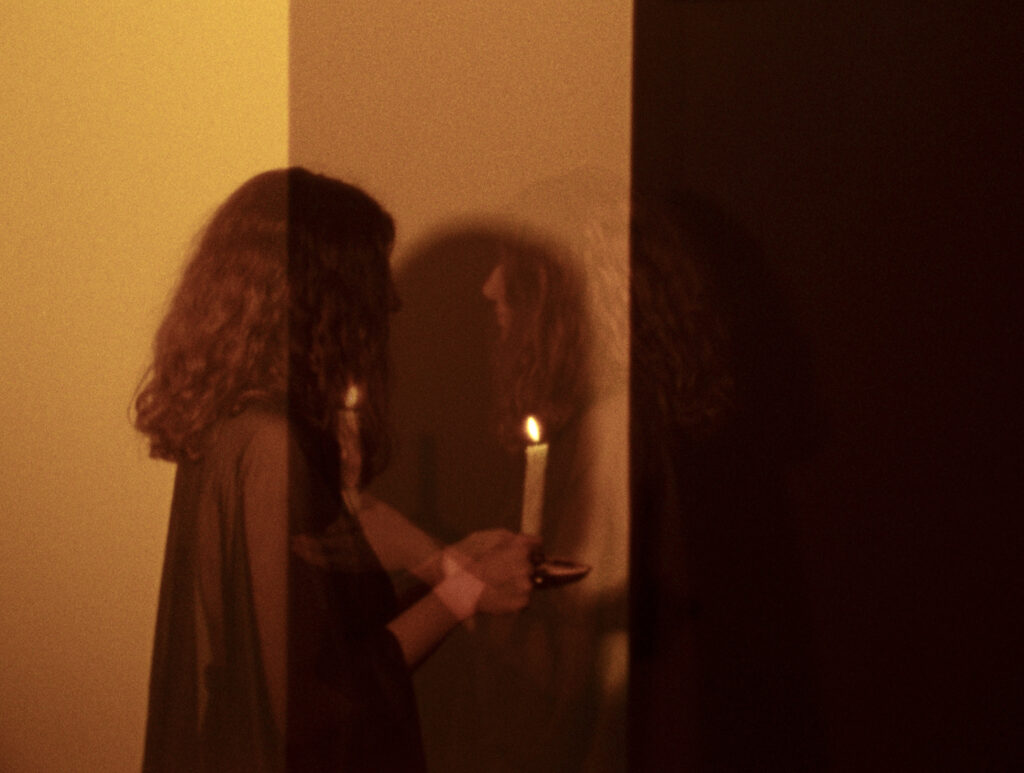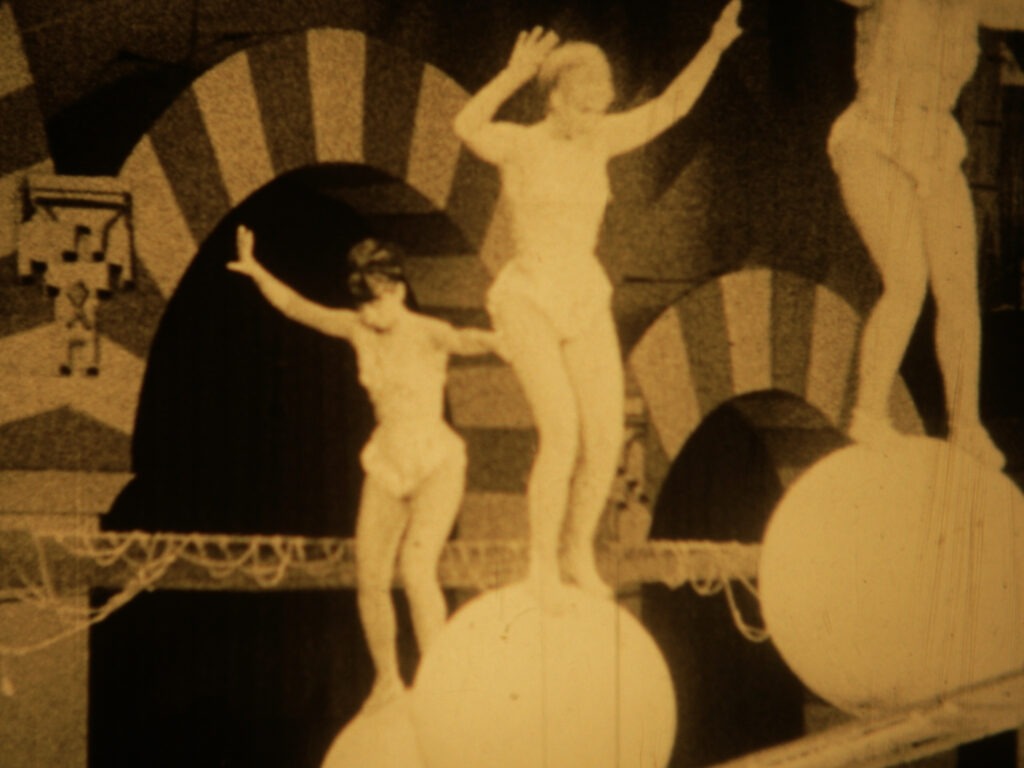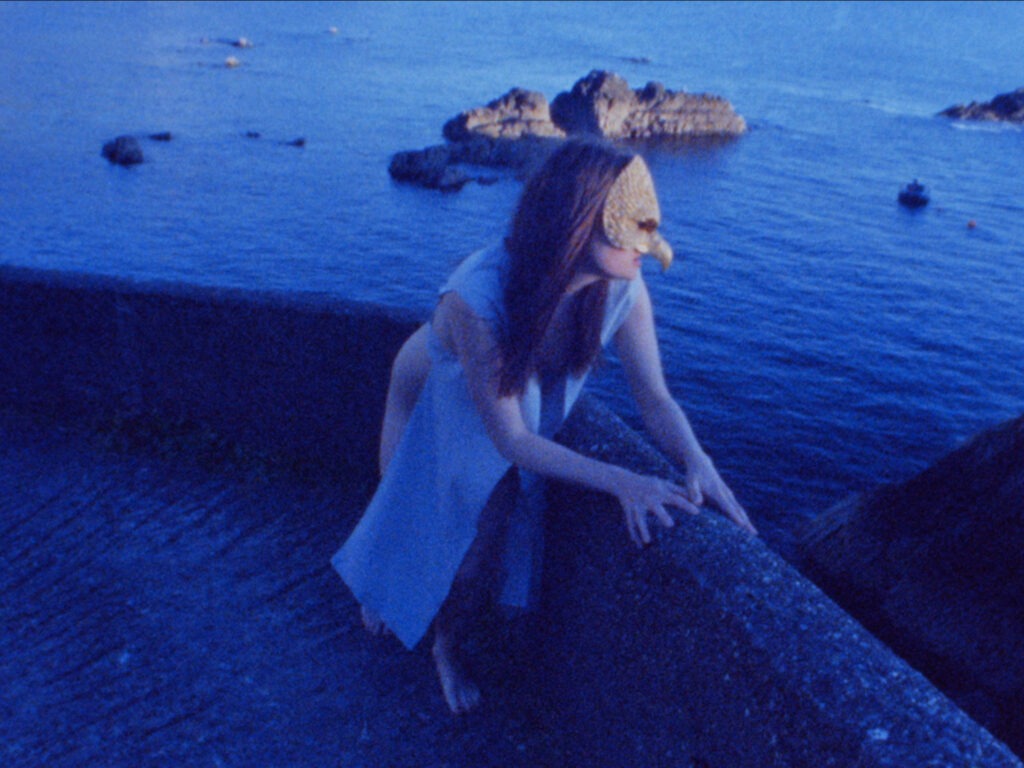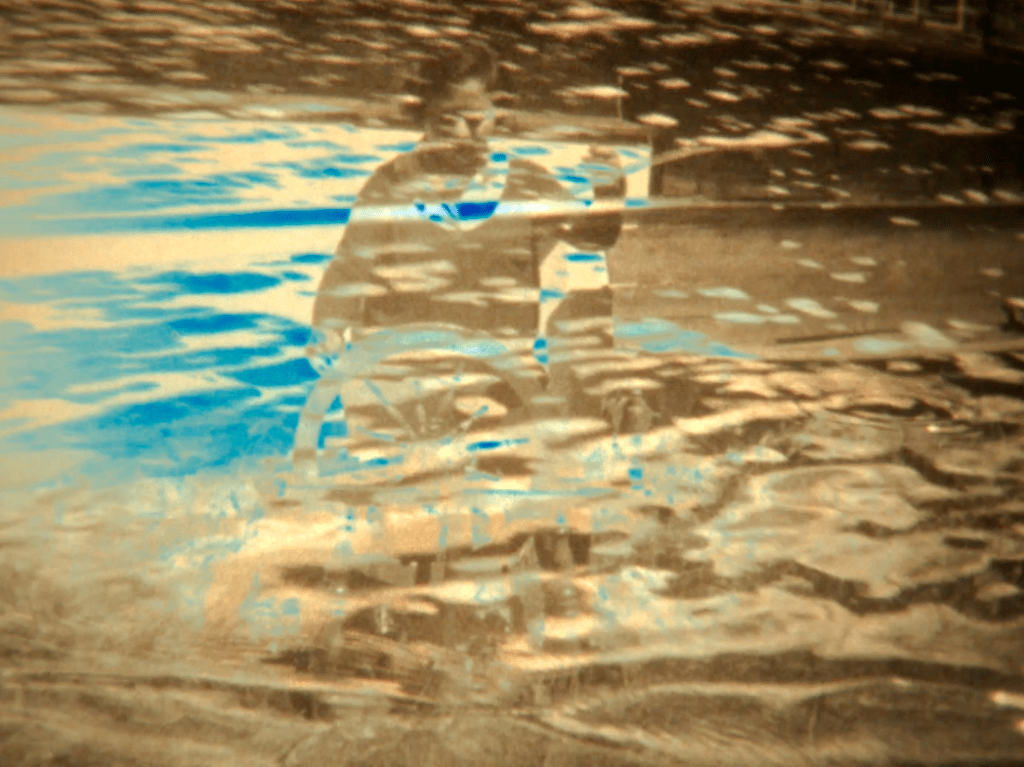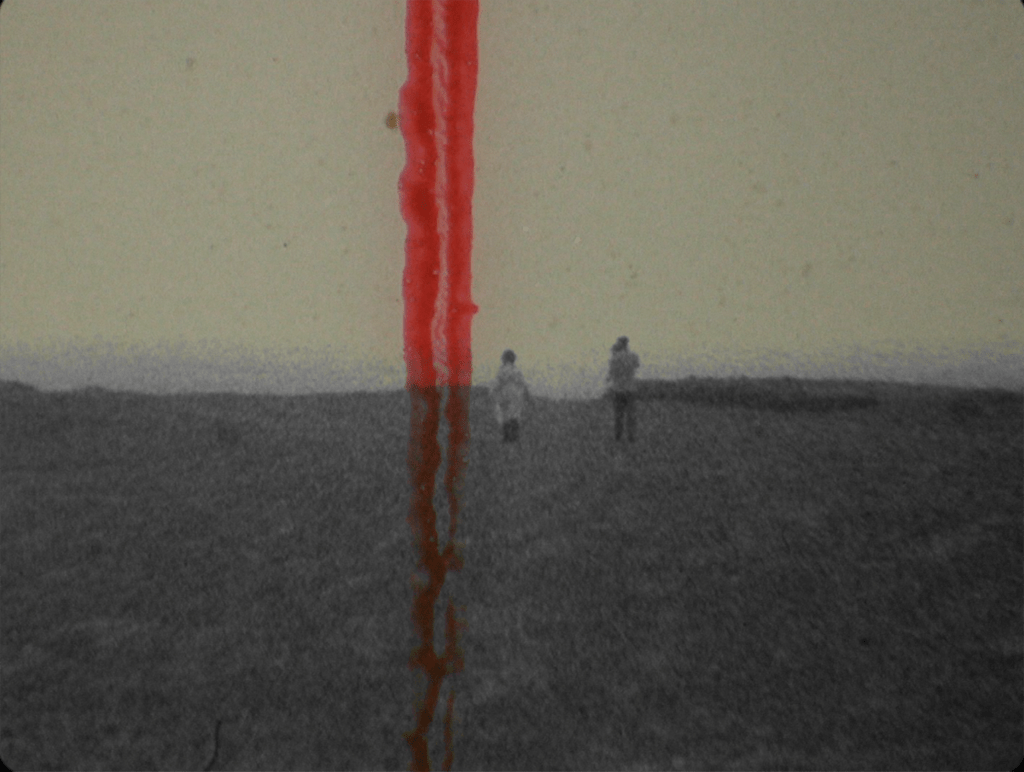showing from March 24th 2025: ‘The Golden Mask’ by Atoosa Pour Hosseini (20 mins, Super 8mm, Ireland, Germany, Serbia and Bosnia & Herzegovina, 2020)
Atoosa Pour Hosseini’s The Golden Mask draws on one of civilization’s most ancient and potent objects, the mask, to explore psychic and territorial displacement. Magisterial yet marginal masked figures haunt edgeland spaces like refugees from a mysterious cataclysm. The eruptions of unsettling bursts of found footage and gloriously decaying images of ruins set these beings adrift in time as well as space. Ultimately, only the mask remains, golden and unchanging amidst the desolation of history.
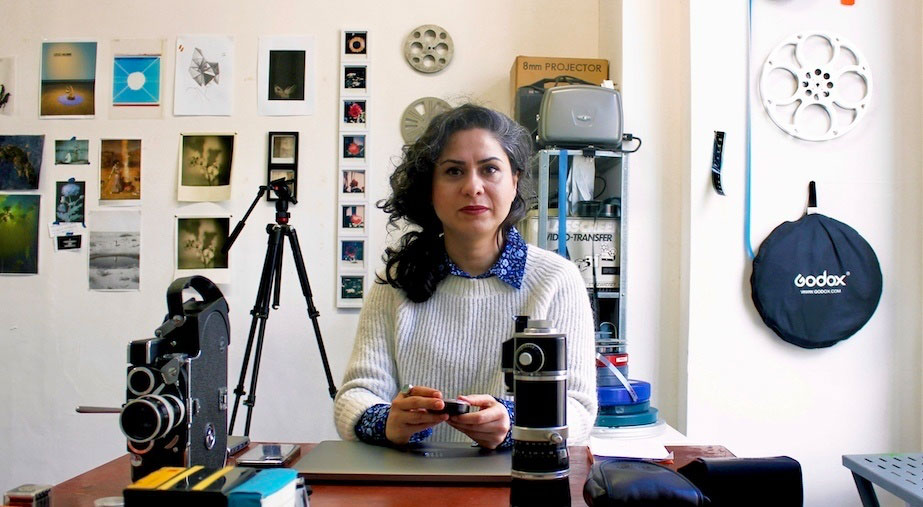
Featured Artist: Atoosa Pour Hosseini
Artist in Focus - Atoosa Pour Hosseini
aemi’s current ‘artist in focus’ is the filmmaker and artist Atoosa Pour Hosseini. For a limited time you can watch Atoosa’s 2020 film The Golden Mask at the link above. You can watch an interview with Atoosa below in which she discusses her work, influences, and approach to filmmaking. You can learn more about Atoosa’s practice below. If you would like further information about Atoosa’s work or are interested in screening any of her films contact us at [email protected]
An interview with the filmmaker Atoosa Pour Hosseini, March 2025
Atoosa Pour Hosseini
Atoosa Pour Hosseini (b. Tehran, Iran 1981) is an Iranian-Irish filmmaker and visual artist based in Dublin, Ireland. Her work extends through films, performances, installations, and sculpture with a particular attention to analogue processes. Atoosa uses her work to explore the influence of history and culture on the perception of reality and illusion and her film work has shown extensively at festivals and screenings in Ireland and internationally including screenings and exhibitions at Temple Bar Gallery, Dublin; Irish Museum of Modern Art; Irish Film Institute; Project Arts Centre, Dublin; Museum of the Moving Image, New York; Jeu de Paume, Paris; Kino Moviemento, Berlin; LUFF festival, Switzerland; Museum of Modern Art, Rio de Janeiro; and Museum of Contemporary Art, Tehran. She was recently awarded residencies at Cité Internationale des Arts, Paris, and Centre Culturel Irlandais (CCI), Paris. Her monograph, Atoosa Pour Hosseini 2011-2021, was published by Oonagh Young Gallery in 2022. Pour Hosseini’s work is held in the collections of the Irish Museum of Modern Art, Arts Council of Ireland, and International Institutes as well as in private collections.
aemi first screened Atoosa Pour Hosseini’s work in 2016 as part of series of screenings around the subject of collectives. Clandestine, a film of Atoosa’s from 2015 showed at that time alongside works by her Experimental Film Society colleagues Rouzbeh Rashidi, Max LeCain/Vicky Langan, Michael Higgins, Jann Clavadetcher and Dean Kavanagh, all of whom have also continued to make daring and interesting works in a variety of forms and modes in the years since. At that time in thinking about those works we evoked Julio García Espinosa’s notion of an ‘imperfect cinema’ – a cinema that must “above all show the process which generates the problems“. In Espinosa’s thinking this was “the opposite of a cinema which “beautifully illustrates” ideas or concepts which we already possess.” At the time of writing, in the early seventies, Espinosa was wrestling with the role of the artist (politically, aesthetically) in all sorts of interesting ways that continue to be relevant. Espinosa here was arguing for a mode of cinema that is discovered as much as it is conceived.
In writing about Atoosa Pour Hosseini’s film Mirage (2015) the critic Michael Sicinski laments the degree to which “we are assaulted by all manner of pigheaded certainty in the media and the political sphere“. For Sicinski he is relieved then to encounter in Atoosa’s work something that “thwarts easy assimilation“. After all “[i]f we mean to resist… it may be necessary to resist meaning” or at the very least resist the reduction of simple interpretation. What we encounter in Atoosa’s work is a deeper potential. Again in writing about her film Clandestine (2015), and the works we screened with it, we wrestled with those elements of the works that defied expectations:
Moving beyond a purely conceptual realm, these films are what happens when experience is allowed to overtake expectation. This also rules out the possibility of failure as each film exists in an indeterminate state of becoming. They also retain their capacity to upset the continuum, to disrupt the seeming stability of our current condition.
This was the key for us and what we encountered then and continue to encounter in Atoosa’s work is a state of fragility in which “the porous nature of analogue film is used to play with different moods, states and temporalities“. The world we enter through Atoosa’s work was
a space-time that is continuous with our own but also altogether foreign. It directly evokes the many worlds of possibility cinema suggests, and through it the apparent solidity of our own existence is rendered fractious and plastic.
